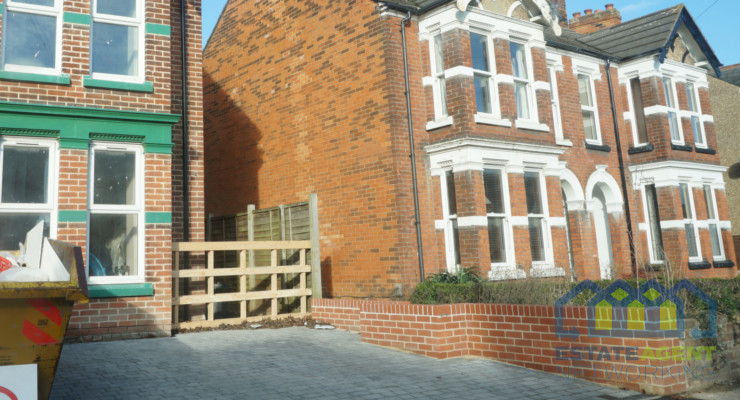Rental market cools as Zoopla records slowest annual rent increase in four years
-
Average rents are 2.4 per cent higher than a year ago, the lowest annual rate in four years and less than half of that recorded 12 months ago
-
Average rents have increased by almost £80 per week over the last five years, adding up to an extra £4,100 a year for renters, resulting in affordability constraints which have contributed to a slow down in rental growth
-
At a localised level, rents are falling across cities including Bristol (-0.5 per cent) and Leeds (-0.6 per cent)
-
The supply of homes is up 19 per cent over the last year with demand 24 per cent lower than last year due to lower migration levels and improved mortgage availability for first-time buyers
-
The number of homes for rent is higher across all regions, especially in the South West and East Midlands where supply has risen by 36 per cent and 31 per cent respectively
-
Rental growth is expected to be on track, at three per cent over the remainder of 2025
The latest Rental Market Report from Zoopla, one of the UK’s leading property websites, reveals that rental market conditions are the weakest they have been since 2020, with the UK rental market showing significant signs of improvement for tenants.
The pace of rental growth has stalled, with rents just 2.4 per cent higher than a year ago, the slowest annual rate in four years and less than half the pace recorded just 12 months ago. The average monthly rent now stands at £1,300pcm, up £30 over the last year.
Table 1: Rental supply and demand coming back to balance
Letting agents are now receiving 24 per cent fewer enquiries from prospective tenants compared to a year ago. Tighter visa rules have led to migration levels almost halving in 2024 and more stable mortgage rates, and rising incomes are encouraging more renters to buy their own homes.
This shift was significantly boosted in the first quarter of 2025 when changes to how mortgage affordability is assessed gave first-time buyers a 20 per cent boost to their borrowing capacity. This change has led to a 30 per cent jump2 in first-time buyer mortgages over the last year, which is both weakening demand for rentals and adding more homes to the market as these buyers move out of their rented properties.
A boost in rental supply welcome news for renters
After years of fierce competition for rental properties, the market is now seeing more choices for renters. The number of homes available to rent has increased by a fifth (19 per cent) over the last 12 months, with the average letting agent having 19 homes for rent, up from a low of 14 in 2022.
This welcome change is driven by several factors. A 36 per cent jump in UK rents since 2020 has made it more attractive for landlords to invest in new buy-to-let properties, with new loans for these purchases up 60 per cent3. At the same time, improving conditions in the mortgage market are helping more first-time buyers move into homeownership, freeing up their old rental homes. With more choice and less competition, homes are now staying on the market for an average of 16 days, giving tenants more time to find the right property.
The number of homes for rent is higher across all regions than a year ago, especially in the South West and East Midlands where supply has risen by 36 per cent and 31 per cent respectively. It’s likely that homeowners who are struggling to sell in these regions are choosing to rent out their properties instead, further boosting the number of available homes. This is giving renters more options and reducing the pressure to settle for the first home they see.
Table 2: Regional breakdown of rental supply
While more homes are becoming available in most regions, this picture looks a little different in London. The number of rental homes in the capital has only increased slightly compared to other parts of the country. This is due to several reasons: landlords using mortgages to buy property for rent need to put down a larger deposit (£187,000 in London vs £29,000 in the North East3 and London also has the largest share of landlords still looking to sell homes (31 per cent of all homes for sale). For renters, this means that while the situation is improving, the London market remains tighter than in other parts of the UK.
Affordability impacts demand and rental growth
Average rents have increased by almost £80 per week over the last five years, adding up to an extra £4,100 a year. This significant increase is making it a real struggle for many people to keep up with their rent payments, adding to the general cost-of-living pressures they already face. Many private renters are on below-average household incomes and almost a third rely on housing benefit to support rental costs, where the allowance has not kept pace with rental increases.
However, five years of rapid increases has meant that rental growth has slowed down across most of the UK as a result of affordability constraints. At a regional level, annual rental growth ranges from less than two per cent in London, Scotland and Yorkshire and Humberside to 4.6 per cent in the North East. At a localised level, rents are falling across cities including Bristol (-0.5 per cent) and Leeds (-0.6 per cent). Rental growth has also slowed across all cities compared to the typical growth rates over the last five years.
Table 2: Increase in average weekly rental costs between 2020 and 2025
Outlook for the remainder of 2025
Rental market conditions are starting to normalise after a frantic few years characterised by many renters chasing too few homes as landlords held back from investing in more stock, which in turn pushed rents higher. Supply and demand are coming back into balance, but the unaffordability of home ownership is trapping people in private renting in many areas, which is keeping rental demand above pre-pandemic levels.
It’s positive that the number of homes for rent is steadily recovering. However, sustained high levels of new investment activity isn’t expected and rental growth is on track to be three per cent over 2025.
Commenting on the report, Richard Donnell, Executive Director at Zoopla says:
“Rental market conditions are starting to normalise which will be very welcome news to renters. Lower migration and better mortgage availability for first time buyers are easing the scale of the competition for rented homes. There is also more choice for renters with more homes for rent as landlords start to buy homes once again and some owners who can’t find a buyer listing their homes for rent.
“The affordability of renting remains a key constraint on the pace of future rental inflation and we expect rents to be three per cent higher by the end of the year at an average of £1,320 a month.”
Peter Maskell, Managing Director of Brock Taylor located in Sussex comments:
“The South East rental market is rebalancing, with more homes available and rent growth easing, giving tenants more choice than we’ve seen in recent years. For landlords, success now hinges on being realistic with pricing and ensuring properties are both well-presented and well-located, as these are the homes that continue to attract strong demand even as the market steadies.”








